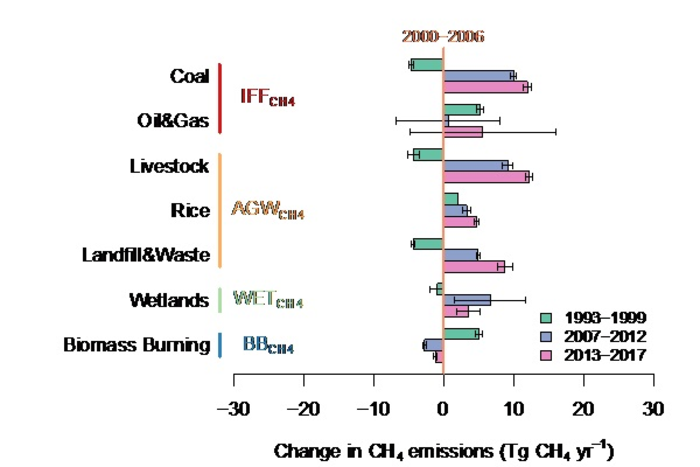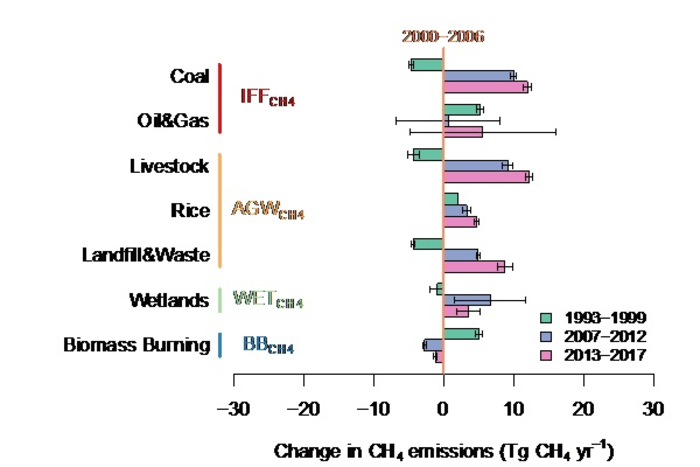In a paper recently published in National Science Review, led by GEOG researcher Dr. Zhen Zhang, along with Professor George Hurtt and Adjunct Associate Professor Benjamin Poulter, as well as an international team of scientists evaluate scenarios about what is causing methane concentrations to rapidly increase in the atmosphere. By combining new and novel isotopic datasets on methane source ‘signatures’ with simple atmospheric models, they ran thousands of potential emission pathways and isolated those that best matched the observed change of methane isotopes in the atmosphere. Using this approach, the authors found that the methane sources most likely driving the increase are from human activities, including agriculture, landfills and waste management, and from the use of coal, oil and gas. These activities are responsible for more than 80% of the rise of atmospheric methane since 2007. The analysis suggests that wetland emissions have not contributed significantly to increases in atmospheric methane, despite continued warming and climate extremes.
The recent 26th Conference of Parties to the United Nations Framework Convention on Climate Change highlighted methane mitigation as an essential component to addressing climate change. This study demonstrates that mitigation in sectors dominated by human activities would have a significant impact on the growth of atmospheric methane.
The full abstract of the paper is presented below:
Atmospheric methane (CH4) concentrations have shown a puzzling resumption of growth since 2007 following a period of stabilization from 2000 to 2006. Multiple hypotheses have been proposed to explain the temporal variations in CH4 growth, which attributes the rise of atmospheric CH4 either to increases in emissions from fossil fuel activities, agriculture, and natural wetlands or to a decrease in the atmospheric chemical sink. Here, we use a comprehensive ensemble of CH4 source estimates and isotopic δ13C-CH4 source signature data to show that the resumption of CH4 growth is most likely due to increased anthropogenic emissions. Our emission scenarios that have the fewest biases with respect to isotopic composition suggest that the agriculture, landfill, and waste sectors were responsible for 53±13% of the renewed growth over the period 2007-2017 compared to 2000-2006; industrial fossil fuel sources explained an additional 34±24%, and wetland sources contributed the least at 13±9%. The hypothesis that a large increase in emissions from natural wetlands drove the decrease in atmospheric δ13C-CH4 values cannot be reconciled with current process-based wetland CH4 models. This finding suggests the need for increased wetland measurements to better constrain the contemporary and future role of wetlands in the rise of atmospheric methane and climate feedbacks. Our findings highlight the predominant role of anthropogenic activities in driving the growth of atmospheric CH4 concentrations.
A full introduction about this paper can be found here: https://www.eurekalert.org/news-releases/935216
The full paper can be accessed here: Anthropogenic emissions are the main contribution to the rise of atmospheric methane (1993-2017)



